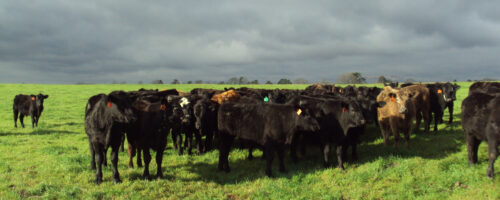A balance sheet is a very useful tool for ranchers to see their financial progress over time. In this article, we’ll take a look at two other financial statements that can help you understand the financial health of your business. Together, these three statements provide powerful insight.
INCOME AND EXPENSE STATEMENT
Most simply, the income statement is a summary of revenue and expenses over a period of time. The time interval will depend on the entity but can be as short as one month and as long as one year.
Due to the annual nature of activities, most agricultural operations put together their income and expense statement on a yearly basis. In thinking about how an income and expense statement fits together with a balance sheet, you might think of the income and expense statement as telling the story of what occurred throughout the year while the balance sheet is a snapshot at the beginning and the end.
The income and expense statement can be compiled using the cash or accrual method. Most frequently, the cash method is used because of its simplicity. However, the cash method can tell you the wrong story unless you manage inventory and accounts payable and receivables very consistently over time. The main difference between the two methods is the time period in which the income and expenses are recognized and recorded. The cash method is simple while the accrual method allows you to match income to the expense incurred to produce it. In other words, the cash method only considers cash transactions such as selling grain or cattle or paying for the inputs the operation consumed. Sometimes a crop of grain or calves can be produced and the inputs paid for and the grain or calves still be in inventory at the end of the accounting period.
The statement of cash flows contains all cash flows, not just revenue and expenses.
In this scenario, a cash method income statement would report much higher expenses than revenue. Oftentimes in an effort to manage taxable income, a farmer or rancher may pay expenses ahead, defer accounts receivable, or only sell a portion or no grain or calves at all. If these practices are not accounted for through accrual adjustments, the true story is not being told. Therefore, if accounts payable and receivables and inventories change considerably from the end of one accounting period to another, it would be best to complete the income statement using the accrual method. This will allow one to accurately evaluate the profitability of their operation, as well as other things like operating profit margin ratios, rate of return on assets and rate of return on equity.
STATEMENT OF CASH FLOWS
Unlike the income and expense statement, the statement of cash flows contains all cash flows, not just revenue and expenses. Cash inflows may include things such as cash from the sale of capital items and proceeds from new loans, while cash outflows can encompass things like principal payments on debt and full cost of new capital assets. This statement reconciles changes in cash from one balance sheet to another.
From the statement of cash flows, you can better understand the repayment capacity, or ability to repay term debts on time, of your business. Some of the ratios that help inform in this area are the replacement margin and the capital debt repayment capacity.
USE STATEMENTS TOGETHER
While each of the financial statements are useful tools on their own, together they provide powerful knowledge. Additional ratios regarding financial efficiency can be calculated using information from all of the financial statements. These include the asset-turnover rate, operating expense, depreciation expense, interest expense and net farm income ratios. Collectively, all of the ratios and indicators help highlight areas of strength and vulnerability. In fact, they may just help us keep our operations out of the ditch.



Comment